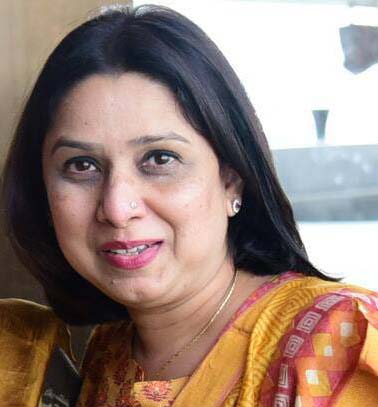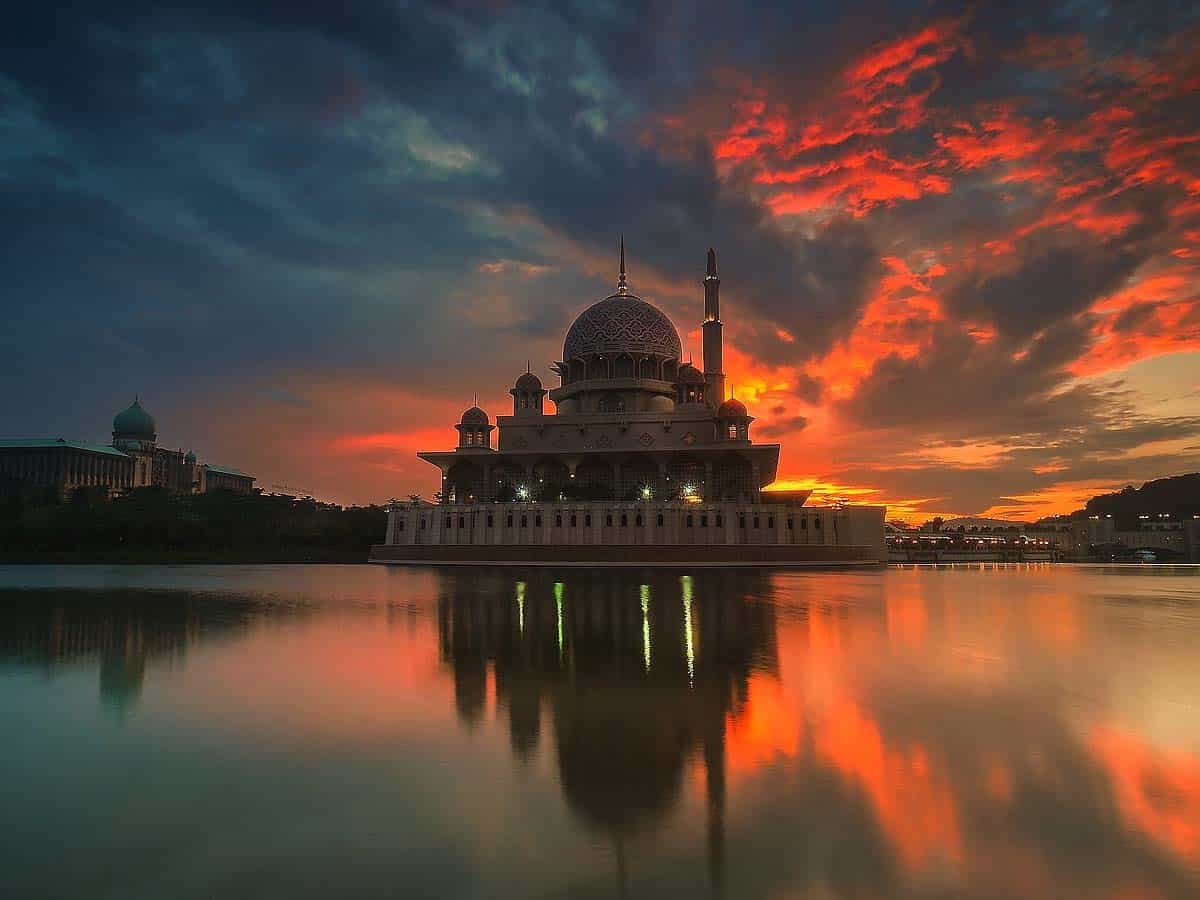
Salma Ahmed Farooqui
Given the background of COVID times, broader interest in metaphysics and cosmology has suddenly become relevant to many matters of mundane importance. What then is the cosmic order and where does humankind stand in this space?
The whole cosmic system of matter and energy of which planet Earth is only a part opens up a broad debate on the position of the real universe. Science and religion seem not really to be contrary and conflicting areas but merely different ways of trying to decode the universe. Both visions contain the material world and an unseen source of creation. Since the cosmos can be traced back only so far before time and space dissolves, there has to be a place where these two opposites meet. Thus, the study of cosmology and paradise is seen at two levels: first, the primordial notions that are buried deep in the mind and second the ideas of poets and philosophers which are full of higher thought.
Composition of the Cosmos
It is not a coincidence that both the scientific and religious worldview sees three layers of cosmic reality: the material reality comprising the world of objects and events; the quantum reality which is a transition zone where energy turns into matter and; the virtual reality which is the place beyond time and space, almost symbolizing the origin of the universe.
Cosmology, then, as reflected in poetic and religious literature establishes an infinite presence. According to theological belief, cosmology is defined as a hypothetical construction. Those who believe in the metaphysical cosmos consider this to be real and the scientific one seems to have emanated from this. The elements of Heaven, Earth, Hell, Angels and Demons are not found in scientific cosmology. The cosmos as constructed and reflected in poetry and religious literature is supposed to be timeless and space-less. There is a transition zone in play here which implies that God and humans meet on common ground. Somewhere miracles take place, along with holy visions, appearance of angels, enlightenment and hearing the voice of God. All of these extraordinary phenomena bridge two worlds: They are real and yet they are not part of a predictable cause-and-effect system. To put it simply, the more humans are attracted to material reality, they remain skeptical about God. Miracles and presence of angels defy reason, and even though holy visions may have been catalogued from time to time, the rational mind remains defiant, believing more in the material construction of the world.
This is the idea of nasut which the renowned Indo-Islamic scholar Annemarie Schimmel described as the mundane world and also terms it as basic human nature. The divine nature that reveals itself in several natural phenomena is called lahut, and the spiritual existence beyond any distinct human or natural form is jabarut. This is the angelic space where the divine decrees and spiritual powers are located. So to say, the entirety of this process and space is seen together in the forms of the nasut, lahut and jabarut.
Appreciation of Cosmic phenomenon by poets
There are many poets who have been inspired with the cosmic phenomenon like heaven, stars, planets, Milky Way etc displaying an approach which looks more imaginative but their thinking has been empirical. They have tried to look at the universe more objectively and in a practical way. A good example is that of Ali Haidar Nazm Tabatabai who says,
Jo kuch diya kareem ne be-inteha diya
Bande ko kaarkhane-e-arz-o-sama diya
(Whatever the benevolent Lord has assigned to me is boundless
He has given me this workshop between Heaven and Earth)

Iqbal’s following couplet taunts the scientific knowledge as he refutes what is there in reality:
Tumi guee ke ma hastam khuda neest
Jahane aabogil ra inteha neest
Ghunut in raz barman na khushudast
Ki chashmam unchabinat hast ya neest
(You say that you are there but God is not there
The water and soil of the earth extends to eternity and has no limit
Yet I am not aware of this secret
My eyes see something that is there or not there?)

Mir Taqi Mir in the following couplet shows how it is to experience God. He subtly describes an equilibrium that keeps the believer from swaying away from the right path. In praise of the Almighty’s creation he says,
Tha musta’ar husn uske jo noor tha
Khursheed mein bhi usika zarra zuroor tha
(The light which was there was borrowed from His beauty
It is not the sun but the particle from His beauty that is manifested in the sun)
God’s presence which is manifested in his light becomes real in the form of Holy visions and revelations that sometimes occur. This light is actually an awareness that makes one feel joyful and blessed. The responses that occur in the brain as a result of seeing this divine light give rise to beliefs in turn leading to an invisible domain where matter dissolves and spirit emerges.
The Cosmos in relation to humans and their ambitions
The cosmic order is considered a total order; it comprises not only all natural objects but also social rules and ethical values. Therefore, it is generally conceived as a benevolent order in which man is able to feel safe and its existence reassures him. Yet, such an order is different from the personal relationship between man and God. God may, perhaps, be moved by prayer and sacrifice and bestow favours and blessings on his devotee. However, when the order of the world is fixed, unchangeable and pre-determined, the course of events cannot be changed by any means. But human beings get the opportunity to manipulate this order, at least to a certain extent, for instance, through piety, prayers and devotion. This is exactly the situation humanity faces at present at the hands of the deadly coronavirus.
Although the cosmic order came into existence with the creation of the world, important questions connected with the relation of the Creator to the world after its creation emerged. On the one hand, it was believed that God will not abandon the world he has created; on the other, it was believed that God created the world and the cosmic order in such a manner that the course was fixed from the beginning and He no longer had any involvement in it. The relationship between man and the cosmos has always been a very interesting subject for the Sufis and poets. In comparison to the cosmos, humans appear as mere microcosms. When it comes to relations with humans and their ambitions even the infinite cosmos falls short of space.

In this context Ghalib says,
Hain kahan tamanna ka doosra kadam yaa rab
Humne dashte imkan ko ek naqshey pa paya
(Where should my ambition place the next step
The whole known space of cosmos has been covered under my one foot)
Iqbal evocatively blends the nature of human relationships in his poetry which is reflected in the following couplet where he says,
Sama sakta nahin pinhaye fitrat mein mera sauda
Ghalat tha yeh junoon shayad tera andaazaye sehra
(I had selected the cosmos thinking it was enough for me
But I was wrong in my judgment, it is not adequate for me)

Jalaluddin Rumi gives a novel interpretation to the conflict between reason and love where the ways of the heart clearly emerge the winner by saying in the following couplet,
Aqal guead shash had ast o hetch berun rah neest
Ishq guead hast rah o rafta am man barha
(Wisdom/reason says there are six directions and there is no way out from any of them
But love says there is a way out and I have gone through that several times)
In these depictions of the cosmos by Rumi, Ghalib, and Iqbal, the cosmos is constructed as an infinite, boundless creation extending beyond the confines of the solar system. The intensity and enormity of the universe gives an uplifting experience to many saints and mystics, poets and philosophers. Their writings and preaching are the effect of the closeness they share with God that occurred in every age when the material bonds are broken.
To be continued
Salma Ahmed Farooqui is Professor at H.K.Sherwani Centre for Deccan Studies, Maulana Azad National Urdu University, Hyderabad. She is also India Office In-charge of Association for the Study of Persianate Societies (ASPS).
The article is based on the input received from noted Indo-Islamic scholar Ziauddin Ahmad Shakeb many summers ago.

